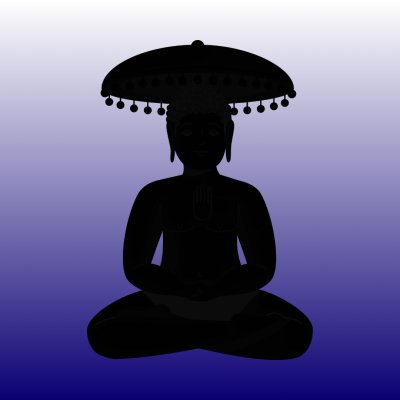
The Paryuṣaṇa Parva (festival) is the most auspicious festival for Jains. The festival has immense benefits for personal development, and thus, immeasurable value for the betterment of society. That is why it is called the king of all Jain festivals
– Parvadhirāj Paryuṣaṇa.
In this article, we discuss some of the key aspects of this auspicious festival.
CĀTURMĀSA
During his twelve years of intense penance and austerities, Lord Mahāvīra spent most of his time away from towns and villages in forests and wilderness during the twelve-and-a-half years of his intense penance and austerities. During the rainy season, he used to stay at secluded places in villages and towns.
As we know, the monsoon rains in India are heavy, and there used to be flooding all over the place – which happens even today. Because of the rains, the ground gets saturated, it is muddy, and there are pools of water all over. As a result, a large number of small animals like rodents, snails, worms, toads, mosquitoes, lizards, snakes come to the surface. It becomes difficult to walk or sit in the wilderness without hurting some life forms.
Everything that Mahāvīra did was driven from ahiṁsā. Ahiṁsā is the foundation of the Jain tradition. In order to minimize or eliminate hurting other living beings during the four months of the rainy season, Mahāvīra started to stay at a secluded place in or near towns and villages during his twelve-and-a-half years of intense penance, and later on, he guided his ordained disciples and laity followers to observe this practice. The four-month period starts on Śayani Ekādaśi (the eleventh day) of Śukla Pakṣa (the first bright half) of Āṣāḍha (the fourth month of the Jain lunisolar calendar) and ends on Prabodhini Ekādaśi (the eleventh day) of the first bright half of Kārttika (the eighth month of the Jain lunisolar calendar), that is from mid-July to mid-November of the Gregorian calendar. The four-month period came to be known as Cāturmāsa.
He taught his followers to utilize the Cāturmāsa for personal improvements by engrossing in introspection, penance, austerities, self-studies, and other spiritual and religious practices. The practice has continued uninterruptedly for twenty-six centuries, and even today, all monks stay at one place and immersed themselves in heightened spiritual practices. As much as possible, many of the householders also slow down their daily routines by limiting travel, social and professional engagements, etc.
Paryuṣaṇa
LIVING WITH THE SELF AND SPIRITUALLY DISCOVERING THE SELF.
During the 4-months Cāturmāsa period, Mahāvīra asked his followers to leave aside the period of Paryuṣaṇa for deep reflection and introspection of one’s own conduct and self-evaluation. The critical day to remember is that the 50th day from the start of Cāturmāsa is supremely auspicious for the Jain followers. The day is known as Samvatsarī. It falls on the fifth day of Śukla Pakṣa (the first bright half) of Bhādrapada (the sixth month of the Jain lunisolar calendar), which falls in late August or early September of the Gregorian calendar.
Over time, two significant traditions of the Jain followers emerged – Śvetāmbara and Digambar. The Śvetāmbara celebrations are for eight days ending on this auspicious day or a day before Samvatsarī. The Digambar celebrations, called Daśa Lakṣaṇa, are for ten days starting from the Samvatsarī day and ending on the day called Anant Caturdaśi.
On a positive note, having it at different times has an advantage, especially for those who have Samvatsarī and Digambar family members – they have the option of celebrating the Paryuṣaṇa for 18 days for added spiritual benefits.
We will talk about Śvetāmbara Paryuṣaṇa and Digambar Daśa Lakṣaṇa celebrations later in this article.
Note the word “celebrations.” This is unique to Jains. In general, one would relate “celebration” with partying, food, etc. That would be a celebration for the body.
For Jains, the real me is my soul, so our celebrations are for the happiness and peace of our souls.


